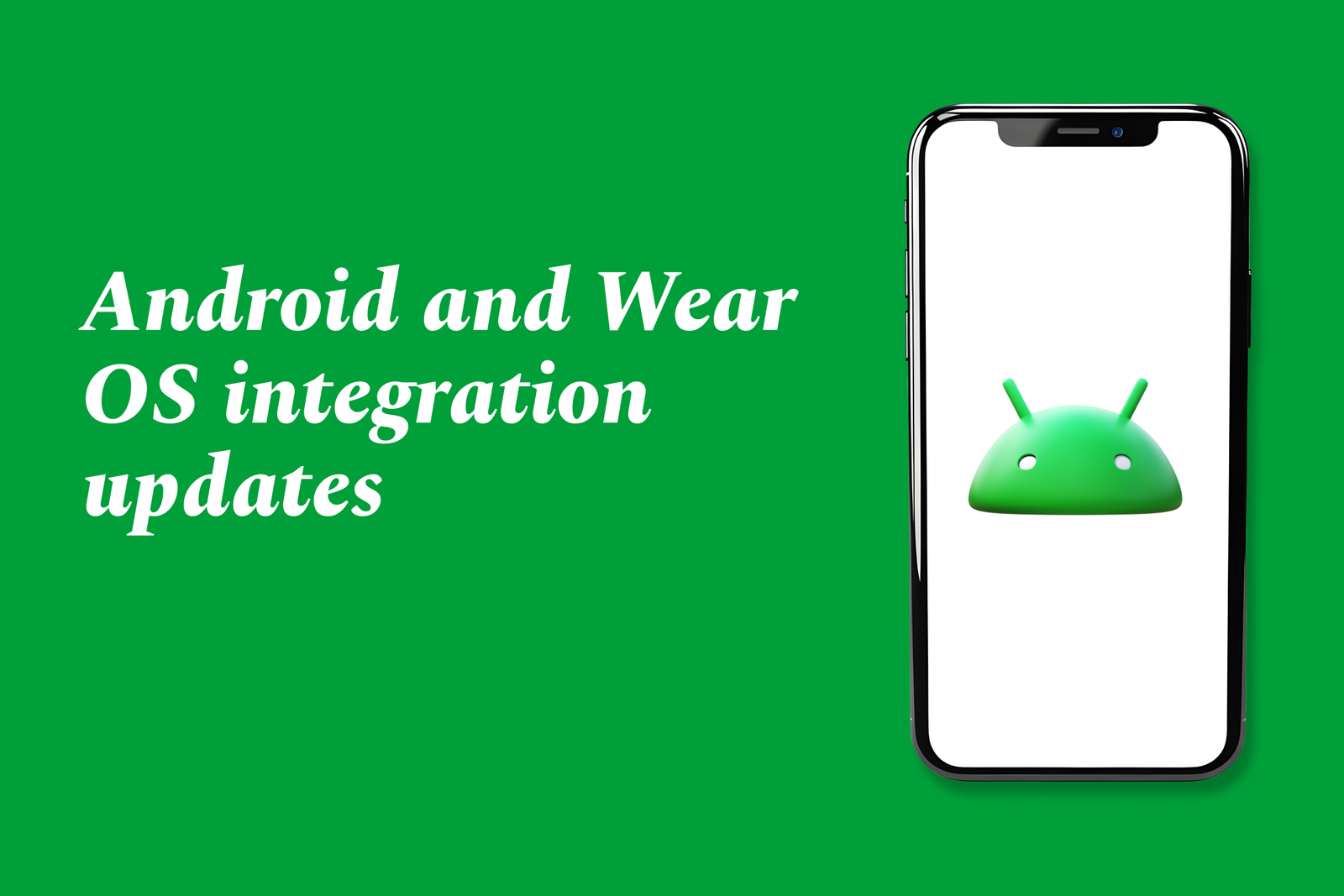Android and Wear OS Integration Updates
Google’s latest Wear OS 6 update enhances Android and Wear OS integration by introducing a new Material 3 Expressive design, improved battery efficiency, dynamic theming, and optimized components tailored for round smartwatches, delivering richer, more personalized user experiences.
Android and Wear OS integration updates
1 ) Introduction to Wear OS 6
Wear OS 6 is the latest version of Google's smartwatch platform, based on Android 16.
It introduces “Material 3 Expressive,” a new design system focused on visual and motion enhancements.
Offers modern, personalized, and distinct user experiences without compromising battery life.
Watches upgrading from Wear OS 5 to 6 may experience up to 10% better battery efficiency.
2 ) Developer Preview and Compatibility
The Wear OS 6 Developer Preview is released for developers to test their apps on the new platform.
Enhancements include refined always on display functionality.
An updated Wear OS 6 emulator is available to check app compatibility.
3 ) Material 3 Expressive Design on Wear OS
Tailored specifically for round watch displays.
Developers are encouraged to adopt this design system in apps and tiles.
New design guidelines and Figma kits have been introduced to facilitate development.
Two new Jetpack libraries support Material 3 Expressive:
Wear Compose Material 3 for app components.
Wear ProtoLayout Material 3 for tile components and layouts.
4 ) Enhanced Color Theming and Typography
Dynamic color theming automatically matches app and tile colors to the watch face on Pixel watches.
Updated color schemes, typography, and shapes provide more depth and variety.
Tiles now default to the system font on Wear OS 6+, ensuring a cohesive user interface.
5 ) New Tile Framework and Components
Tiles adopt a new 3 slot layout: title, main content, and bottom slot for visual consistency.
Components are optimized for glanceability and circular screens.
The framework supports various screen sizes while maintaining interface clarity.
6 ) Optimized Components for Round Wearable Screens
Introduction of the Edge Hugging Button design that maximizes screen space.
Components like Buttons and Lists support shape morphing to better fit display form factors.
Components adapt automatically to larger screen sizes, extending features introduced in Wear OS 5.
7 ) Summary
Wear OS 6 advances smartwatch usability with improved design, performance, and developer support.
The platform balances expressive aesthetics with battery efficiency.
New tools and libraries enable developers to create rich, glanceable, and personalized watch experiences tailored to round displays.
This update marks a significant step in integrating Android and Wear OS platforms with a focus on user experience and developer empowerment.
https://justacademy.in/news-detail/future-of-flutter-careers-post-2025
https://justacademy.in/news-detail/healthcare-apps-built-with-flutter
https://justacademy.in/news-detail/top-flutter-packages-to-use-in-2025
https://justacademy.in/news-detail/flutter-+-gemini-ai-integration-tutorial
https://justacademy.in/news-detail/flutter-job-interviews:-what’s-changed
Related Posts
In 2025, top Angular libraries offer modern, feature-rich components and tools for building dynamic web apps. From powerful data grids to low-code platforms like UI Bakery, these libraries enhance development speed, UI design, and scalability, making them essential for Angular developers.
Migrating from AngularJS to Angular 17 involves gradually upgrading your app by running both frameworks together using tools like ngUpgrade, rewriting components in TypeScript, and adopting Angular’s modern architecture to enhance performance, maintainability, and long-term support.
Angular state management tools help organize and handle app data efficiently, improving scalability and maintainability. Popular options include NgRx for robust, RxJS-based patterns, and newer Signal Store solutions that offer simpler, reactive approaches integrated tightly with Angular’s latest features.
RxJS in Angular empowers developers to manage asynchronous data streams with powerful operators like `forkJoin`, `combineLatest`, and `zip`. Mastering these key operators in 2025 is essential for building efficient, reactive applications that handle complex event sequences seamlessly.
Angular performance optimization in 2025 focuses on improving app speed and responsiveness by using techniques like OnPush change detection, lazy loading, efficient data caching, and AOT compilation. These practices reduce load times, enhance user experience, and ensure scalable, fast Angular applications.
In 2025, Angular remains preferred for large-scale, enterprise apps with its robust, all-in-one framework, while Vue attracts developers seeking simplicity and fast development for smaller projects. Both frameworks excel, with choice driven by project needs and team expertise.
Angular Signals are a new reactive primitive in Angular 16 that enable fine-grained, efficient change detection by automatically tracking dependencies and updating only affected parts of the UI. They simplify state management and boost app performance, revolutionizing Angular's reactivity model.
Angular interview questions to prepare in 2025 focus on core concepts like components, directives, data binding, routing, and dependency injection, along with TypeScript mastery and latest Angular features to ensure strong practical knowledge for building scalable, efficient web applications.
AngularJS reached its official end of support in January 2022, meaning no further updates or security patches. To ensure app security and performance, developers should consider migrating to modern Angular versions or seek third-party long-term support options if immediate migration isn’t possible.
The Angular Roadmap 2025 highlights upcoming features focused on improving developer experience and performance, including zoneless Angular, Signals integration, enhanced Forms, async data handling, improved HMR, and expanded Angular Material/CDK enhancements, driving modern, efficient web app development.










